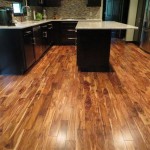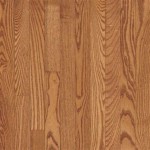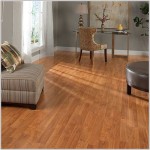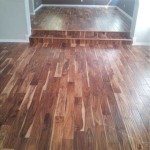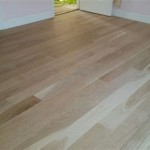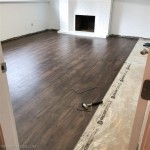Understanding Tongue and Groove Flooring: From Basics to Benefits
Tongue and groove flooring, a time-honored and versatile flooring solution, continues to captivate homeowners and contractors alike. Its enduring popularity stems from its inherent durability, ease of installation, and stunning aesthetic appeal. This article delves into the essential aspects of tongue and groove flooring, providing a comprehensive guide to its advantages and considerations.
Tongue and Groove Mechanism
The defining characteristic of tongue and groove flooring lies in its interlocking mechanism. Each plank possesses a precisely milled tongue on one edge and a groove on the other. When planks are joined, the tongue of one board fits snugly into the groove of the adjacent one, creating a sturdy and seamless surface.
Types of Tongue and Groove Flooring
Tongue and groove flooring comes in various materials, each offering unique advantages. These include:
- Solid Wood: Crafted from a single piece of wood, solid wood flooring exudes warmth and elegance. It requires regular maintenance to retain its beauty.
- Engineered Wood: A composite material featuring a thin layer of real wood over plywood or HDF, engineered wood flooring offers stability and durability at a more affordable price.
- Laminate: A budget-friendly option, laminate flooring consists of a high-resolution photographic layer topped with a protective coating, providing a realistic wood-like appearance.
Benefits of Tongue and Groove Flooring
Tongue and groove flooring boasts numerous advantages, making it a popular choice for a wide range of applications:
- Sturdiness: The interlocking mechanism ensures a secure and stable flooring surface, minimizing unwanted movement and noise.
- Easy Installation: With its convenient click-and-lock system, tongue and groove flooring can be installed swiftly and efficiently, reducing labor costs.
- Dimensional Stability: The tongue and groove joint compensates for natural wood expansion and contraction, preventing gaps or buckling.
- Aesthetic Appeal: Tongue and groove flooring adds character and warmth to any space, with a wide range of colors and finishes available to complement diverse interior styles.
Considerations for Tongue and Groove Flooring
While tongue and groove flooring offers many advantages, it's essential to consider the following factors before making a decision:
- Moisture Resistance: Solid wood tongue and groove flooring is not suitable for moisture-prone areas like bathrooms or kitchens.
- Maintenance: Solid wood requires regular maintenance, including occasional sanding and refinishing, to maintain its appearance.
- Cost: Solid wood tongue and groove flooring tends to be more expensive than other types, such as laminate or engineered wood.
Conclusion
Tongue and groove flooring remains an exceptional choice for homeowners seeking a durable, easy-to-install, and aesthetically pleasing flooring solution. Its time-tested design and versatility make it suitable for various interiors, from traditional to contemporary. Whether you opt for the warmth of solid wood, the stability of engineered wood, or the affordability of laminate, tongue and groove flooring can elevate the ambiance of any space while providing lasting beauty and performance.

All You Need To Know About Tongue And Groove Flooring Installation Reallyfloors America S Est Hardwood

Tongue And Groove Vs Wood Flooring Direct

5 Essential Tips For Tongue And Groove Flooring District Floor Depot

Tongue Or Groove Which To Install First

Tongue And Groove Vs Wood Flooring Direct

How To Install Tongue And Groove Flooring Blog

Should You Install Tongue And Groove Laminate Flooring Ozburn Hessey

Tongue And Groove Or System Flooring Wood Beyond Blog

Tongue And Groove Porch Flooring Installation Guides

Install Tongue And Groove Wood Veneer Flooring

